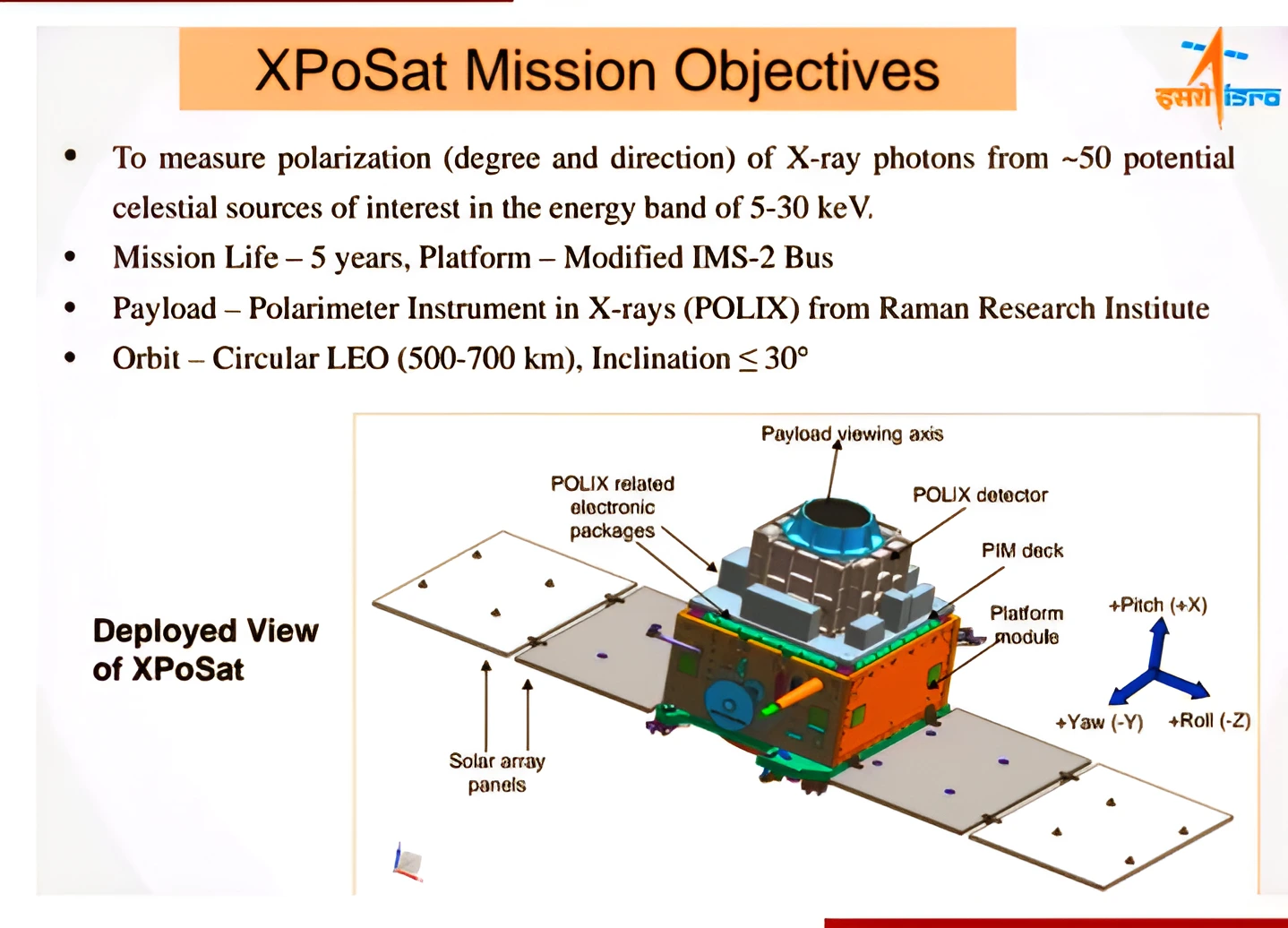Context: This editorial is based on the news “ISRO successfully launches PSLV-C58 XPoSat mission” which was published in the Hindu. Recently, the Indian Space Research Organisation (ISRO) has successfully launched the X-ray Polarimeter Satellite or XPoSat Mission to study polarized X-rays emitted in astrophysical phenomena.
| Relevancy for Prelims: ISRO, X-rays, X-ray Polarimeter Satellite, XPoSat Mission, and PSLV Orbital Experimental Module-3 (POEM-3).
Relevancy for Mains: XPoSat Mission and its Objectives, and Significance. |
About the XPoSat Mission
- A two-part Mission: ISRO launched the XPoSat Mission, in a two-part mission, onboard a Polar Satellite Launch Vehicle (PSLV) on its C58 flight.
- After injection of XPoSat The PSLV Orbital Experimental Module-3 (POEM-3) experiment will be executed with 10 identified payloads from ISRO and IN-SPACe.
- India became 2nd Country: It is the second space-based experiment to study X-ray polarization, and at higher X-ray energies than the other, NASA’s Imaging X-ray Polarimetry Explorer.
- Payloads: It carries two payloads, which are expected to shed light on intense X-ray sources such as pulsars and black holes.
- POLIX (Polarimeter Instrument in X-rays): Realized by the Raman Research Institute, it will track X-rays in the 8-30 kilo-electron-volt (keV) energy range and observe emissions from around 50 sources in five years.
- XSPECT (X-ray Spectroscopy and Timing): Realized by ISRO’s U.R. Rao Satellite Centre, it will study X-rays of energy 0.8-15 keV and changes in continuous X-ray emissions.
XPoSaT Mission Objectives
- To measure polarization of X-rays in the energy band 8-30keV emanating from about 50 potential cosmic sources through Thomson Scattering by POLIX payload.
- To carry out long term spectral and temporal studies of cosmic X-ray sources in the energy band 0.8-15keV by XSPECT payload.
- To carry out polarization and spectroscopic measurements of X-ray emissions from cosmic sources by POLIX and XSPECT payloads respectively in the common energy band.
- Testing: After launching XPoSat mission in a 650-km circular orbit around the earth, the fourth stage of the rocket lowered itself into a 350-km-high orbit and unfurled solar panels, becoming a mini-satellite and orbital testbed for the 10 payloads it carried.

XPoSaT Mission Significance
- Use of PSLV: This is only the third time ISRO has operated the PSLV fourth stage in this way.
- Collaboration: This C58 mission represents a union of the aspirations of professional scientists, aspiring students of science, and India’s private spaceflight sector.
- Multiple Functioning: It comprises a radio payload, a device to measure ultraviolet radiation, a ‘green’ cubesat propulsion unit, a ‘green’ monopropellant thruster, a tantalum-based radiation shield, a heater-less hollow cathode, a nanosatellite platform, an interplanetary dust counter, a fuel-cell power system, and a high-energy cell.
About Polarization
- It refers to the orientation of oscillation of electromagnetic waves.
- For X-rays, it describes the direction in which the electric field associated with the X-ray wave oscillates.
About Polarimeter
- An important diagnostic tool to detect and measure the polarization state.
- They typically use devices such as gratings, analyzers, or other technologies capable of discerning the polarization of X-rays.
|
Conclusion:
It is a significant step towards the understanding and exploring of high-energy astrophysical phenomena and in India’s space research and exploration vision for humankind’s knowledge of the universe.
![]() 2 Jan 2024
2 Jan 2024


